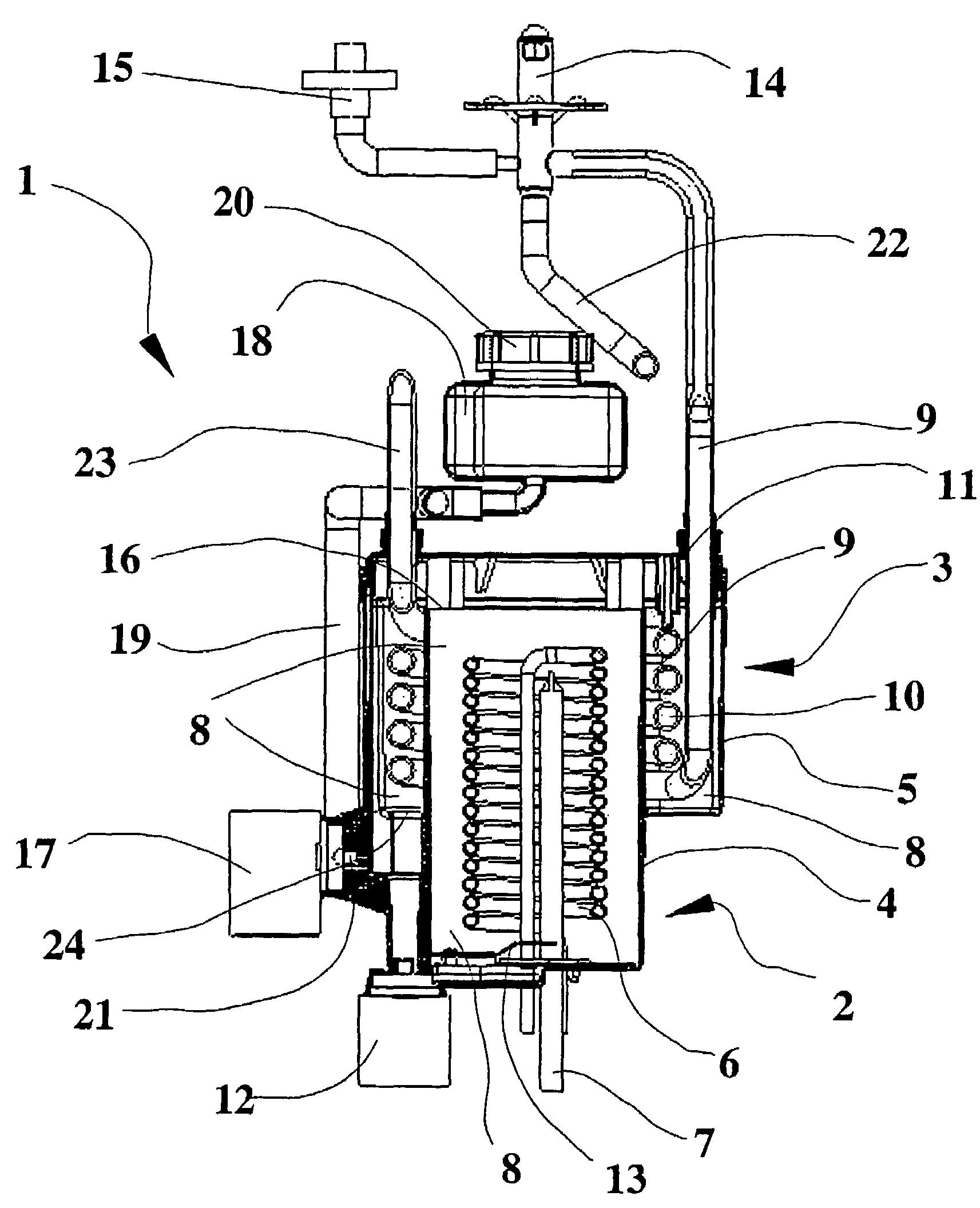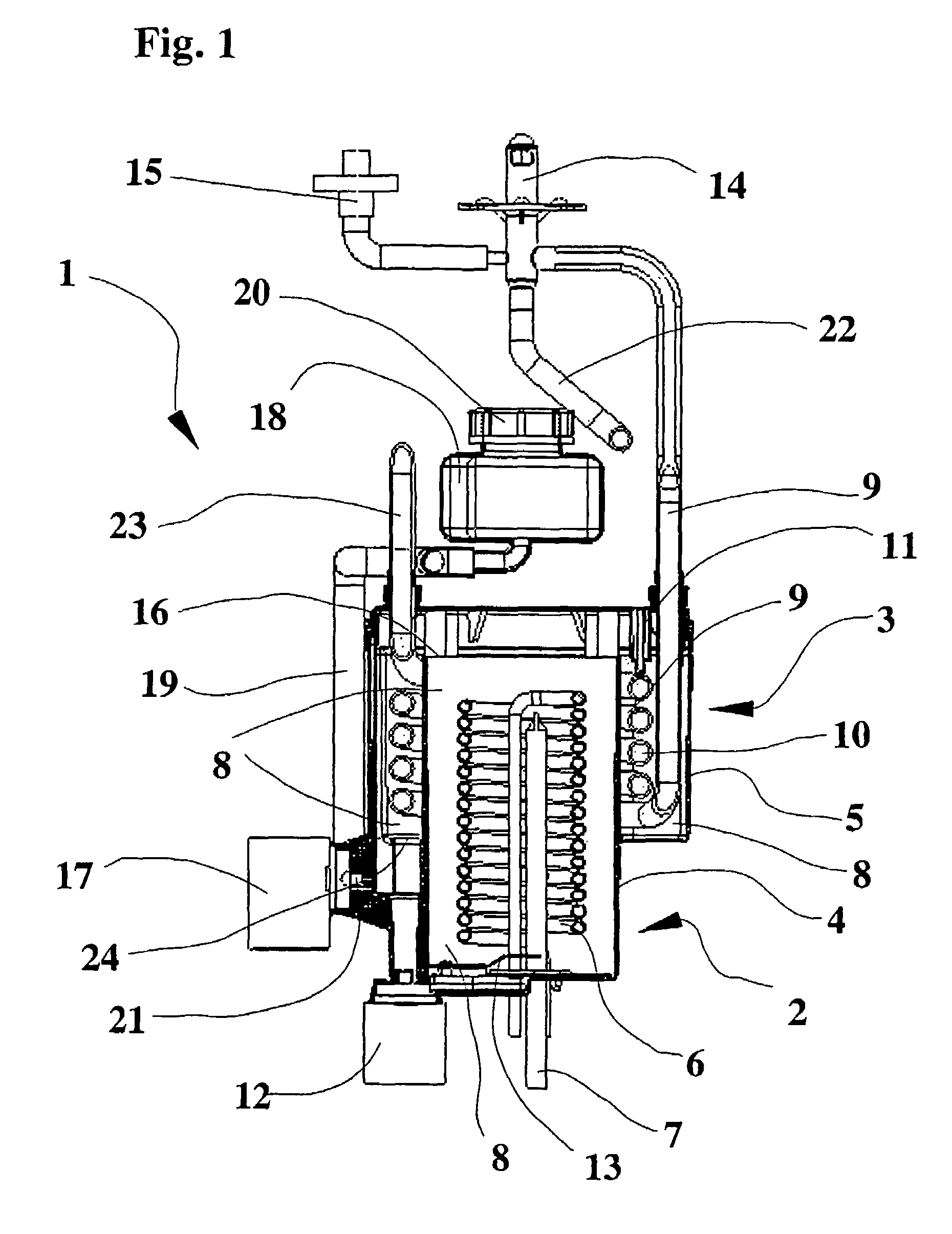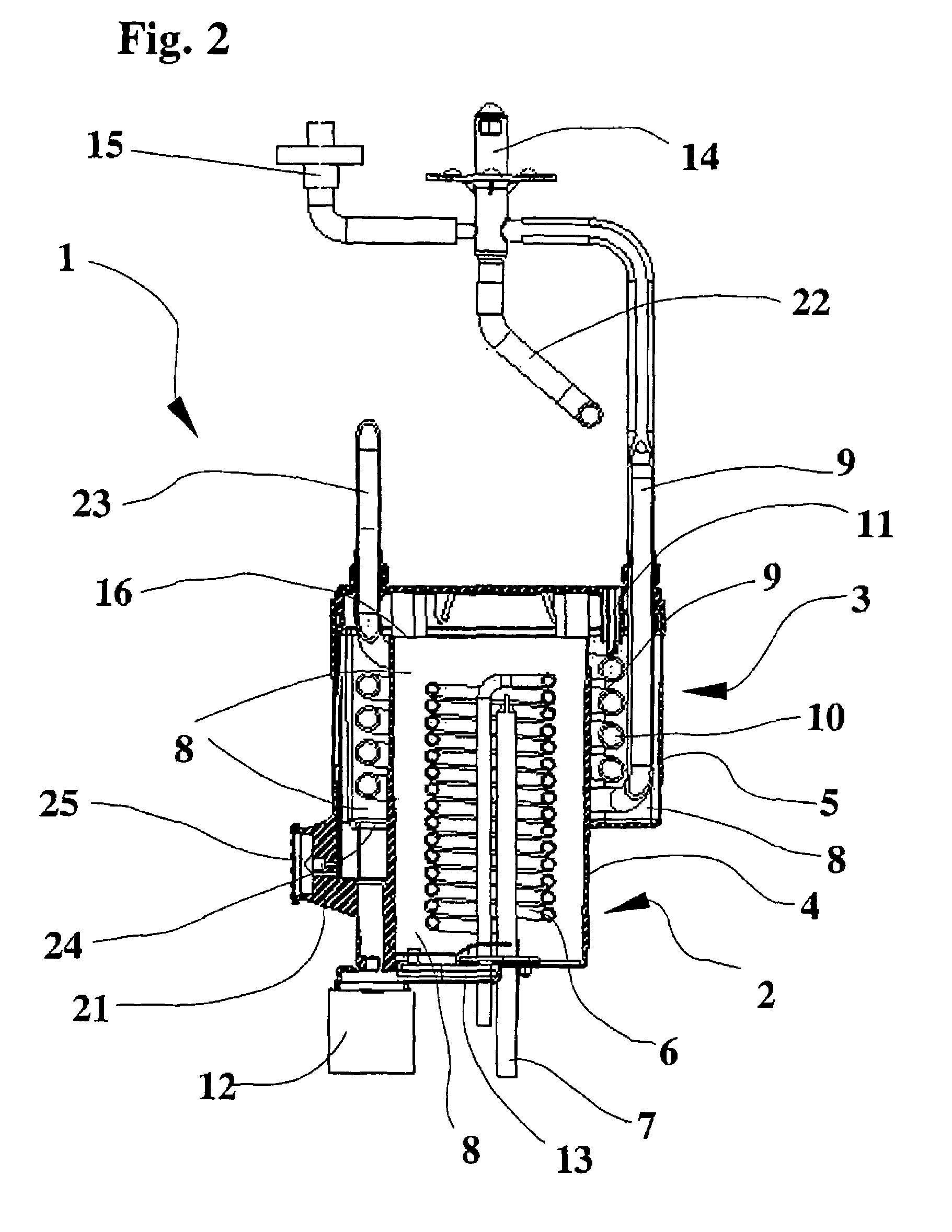Fluid cooling system, cooled fluid dispenser comprising the later, and methods for sterilization thereof
a technology of fluid dispensers and cooling systems, which is applied in the direction of liquid dispensing, stationary tubular conduit assemblies, lighting and heating apparatus, etc. it can solve the problems of high cost of operation, cleaning or sterilization and maintenance, and the downtime of the machine during the cleaning or sterilization step is relatively high, so as to reduce the volume of heat transfer agents and effectively transmit thermal energy , the effect of releasing cooling energy over tim
- Summary
- Abstract
- Description
- Claims
- Application Information
AI Technical Summary
Benefits of technology
Problems solved by technology
Method used
Image
Examples
example 1
[0039]The fluid cooling system, indicated generally by reference 1, is a machine based on an ice bank system. The system 1 comprises a primary heat exchanger system, identified generally by the reference 2, and a secondary heat exchanger system, identified generally by the reference 3. The primary and secondary heat exchangers systems 2,3 each comprise a chamber 4,5 respectively. The chambers 4,5 are made of a plastic material. Chamber 4 of the primary heat exchanger system 2 houses an evaporator or coil 6 which is connected to a standard refrigeration system (not shown) outside of the primary 2 and secondary 3 heat exchanger systems. As can be seen from the FIGS. 1 and 2 chamber 4 is partly housed within chamber 5. The chambers 4 and 5 are preferably generally cylindrical in shape. The primary heat exchanger system 2 also comprises a thermostat 7, as defined previously, designed to regulate the temperature of heat transfer agent 8, in this case water contained inside chamber 4. In ...
example 2
[0045]The fluid cooling system, shown in FIGS. 3 and 4, and indicated generally by reference 101 comprises a primary heat exchanger, indicated generally by reference 102, a secondary heat exchanger indicated generally by reference 103, and a tank 118 that functions as a reservoir or storage tank to prime the pump 112 via tube 127 with heat exchange agent 108 and as a recovery unit for this same heat exchange agent 108.
[0046]The primary heat exchanger 102, in which cooling of the heat exchange agent occurs, comprises a tank or chamber 104, containing the heat exchange agent 108 that can be in either the fluid or solid phase around a coil (not shown), or a finger or other equivalent means known to the skilled person, but substantially as described for the preferred embodiment illustrated in FIGS. 1 and 2. The coil, in this case, is made of a suitable material that enables efficient energy transfer from the coil to the primary heat exchange agent, and is preferably made of metal, for e...
PUM
 Login to View More
Login to View More Abstract
Description
Claims
Application Information
 Login to View More
Login to View More - R&D
- Intellectual Property
- Life Sciences
- Materials
- Tech Scout
- Unparalleled Data Quality
- Higher Quality Content
- 60% Fewer Hallucinations
Browse by: Latest US Patents, China's latest patents, Technical Efficacy Thesaurus, Application Domain, Technology Topic, Popular Technical Reports.
© 2025 PatSnap. All rights reserved.Legal|Privacy policy|Modern Slavery Act Transparency Statement|Sitemap|About US| Contact US: help@patsnap.com



